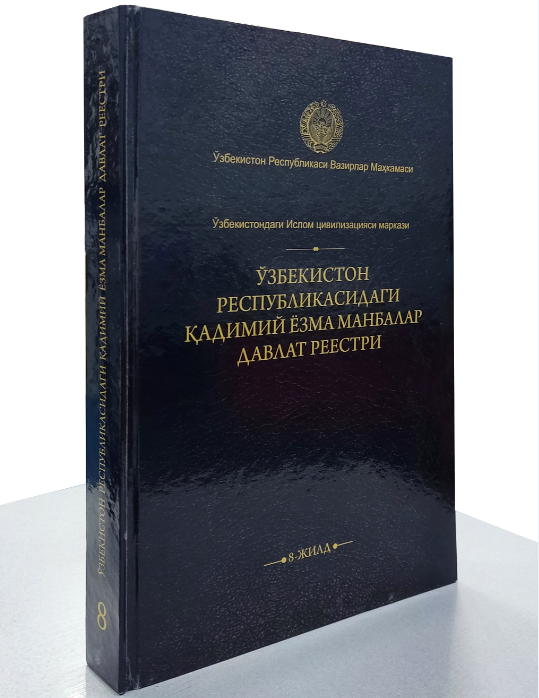The cities of the Central Asian Mesopotamia suffered more from the Mongol invasion than in the west of the Caliphate, so the level of economic development, urban planning, crafts and cultural life in Transoxiana in the late 13th – early 14th century was noticeably lower than in Iran or Arab countries.: «Mongol rule turned out to be a gloomy experience, although perhaps it was not completely negative in all respects, at least for those Persians who managed to survive» (Morgan. 2016. P. 53).
Culturally, the Mongols could not enrich the conquered developed civilizations of the Muslim East either with the achievements of the craft, let alone with architectural ideas. They were far from urban culture and sedentary civilizations. In their homeland, in the steppes of Mongolia, they depended on China and needed such necessities as metal for weapons, fabrics, ceramics and porcelain, as well as luxury items — jewelry and vessels made of silver and gold. Chinese influence in the form of fine handicrafts and motif decoration they brought with them to
the conquered Islamic lands, and Chinese motifs and images became part of the Iranian repertoire of themes. These are images of flying phoenixes on fabrics and ceramic dishes from the early 14th century. (The Legacy ... 2002. P. 178. Fig. 208. cat.no. 134; P. 201. Fig. 242. cat. no. 133), frightening dragons on ceramic tiles of the late 13th – early 14th centuries (The Legacy ... 2002. P. 65. Fig. 59. cat.no. 101; P. 97. Fig. 106. cat.no. 93), Chinese clouds in miniatures of Baghdad 1296. (The Legacy …2002. P. 173. Fig. 201. cat. no. 1) and Tabriz 1330. (The Legacy ...2002. P. 166. Fig. 194. cat. no. 45).
Perhaps the first wave of penetration of the Far Eastern, Chinese traditions and decor themes into the art of Maverannahr occurred indirectly through craftsmen, builders and architects from Iran and Arab countries, who were brought by Amir Temur to the cities of Maverannahr at the end of the 14th century. As for the widespread traditions of Chinese porcelain, stone and wood carving in Maverannahr, this process took place after the death of Amir Temur, in the first half of the 15th century - during the reign of Shahrukh Herat and his son Ulugbek in Samarkand, when relations with China were close and friendly.
Dragon images were popular in Chinese imperial architecture. In Central Asia, images of dragons can be found on the portal of the mosque in Anau in the middle of the 15 th century (Mosque of Seyit Jamal ad-Din). At the same time, for some reason, the origin of the plot of opposing dragons is not associated with Chinese traditions, but is attributed to local folk legends (Pugachenkova 1956; Pugachenkova. 1959). As for the clouds, they became very popular in the miniature painting of Iran and Maverannahr during the 14th–18th centuries. In this sense, the genesis and features of the Temurid style in the architecture and crafts of Mavernnahr are largely associated with the art of the western regions of the Islamic world, and primarily Khorasan and Iran.
The architecture and crafts of Maverannahr by the end of the 13th – beginning of the 14th centuries were slowly but still being restored, although there were no bright artistic achievements yet. Despite the rare attempts of the Mongol khans themselves to take the helm of government in Maverannakhr, nevertheless, the real rulers of the region were Muslim governors from among the local nobility, who were appointed by the khans of the Chagatai branch of the Mongol court. one of these rulers, which for a long time was ruled by Mavrannahr on behalf of the Chagatids, was the local feudal lord Masudbek, on whose orders the Masudiye madrasah, which was not preserved, was built in Bukhara, in which he was buried in 1289 (Bartold 1963. P. 261–262; Pugachenkova, Rempel 1965. P. 246).
However, the construction of a monumental madrasah in Bukhara, in which more than 1000 students studied, is noted as early as the middle of the 13th century (Pugachenkova, Rempel 1965. P. 246). Moreover, huge funds for the construction of a madrasah in Bukhara were contributed by Sorkhakhtani-beki, the eldest wife of Tolui, the son of Genghis Khan and the mother of Munke, proclaimed great khan in 1251. Being a Nestorian Christian, Sorkhakhtani-beki (1192–1252), nevertheless, provided patronage to Muslims.
In the 13th–14th centuries, more stable and successful than in Maverannahr, the restoration of economic and cultural life took place in Khorezm, which had closer economic and cultural relations with Iran and the Golden Horde. This is evidenced by the mentions of medieval authors - Batuta and Arab Shah, who visited the Golden Horde Urgench in the 14th century.
The skill of Khorezmian architects, builders, ceramists and performers of decorative tiles and tiles had a great influence on the architecture of the Golden Horde cities of the 13th–14th centuries. One of the rare monuments of the 13th century, created on the territory of medieval Khorezm, is the mausoleum of Nazhmiddin Kubra, which became one of the first examples of a two-domed burial structure.
HISTORY OF THE ARTS OF UZBEKISTAN Akbar Khakimov






